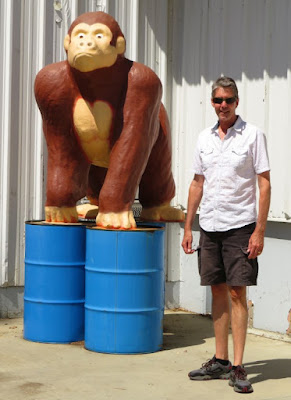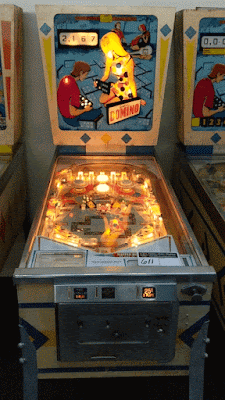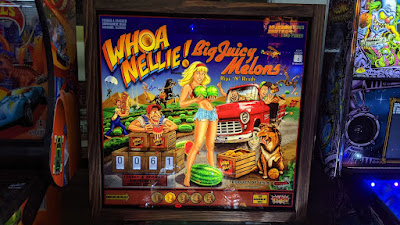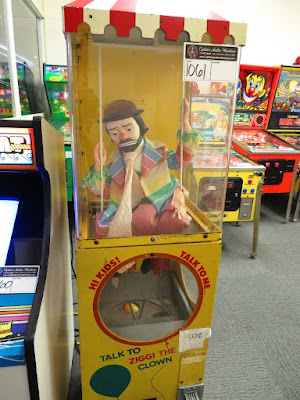Museum of Pinball Goes to Auction!
Our day found us in the town of Banning, the home of the world’s largest pinball collection, a 40,000-square-foot museum housing every decade since the invention of pinball (and video games). Sadly, this amazing place has closed due to financial difficulties, augmented by the pandemic. Its collection is going to auction and could be worth as much as $7 million. We were there to ogle, admire and reminisce.
Long before video games found their way into the home, arcades across America were filled with the lights and sounds of mechanical pinball machines and the young people who were enamored by them. These machines are now finding their way back into the spotlight in barcades, private collections, and professional pinball tournaments. John Weeks, the owner and founder of the Museum of Pinball, saw their value and created this pinball palace in 2015.That's not to say that all machines were dark. Customers had the chance to sample the product before purchase. Domino (1968) was created by Ed Krynski, a pinball game designer and innovator who worked for D. Gottlieb & Co between 1965 and 1984. During this time Krynski designed more than 200 games and innovated new pinball standards such as the laneways to the flipper, carousel targets, vari-targets, multiple drop targets, and the first solid state pinball machine with the speaker in the backbox instead of the bottom cabinet. Krynski is a member of the Pinball Hall of Fame.
Gottlieb's Bowling Queen (1964) had Steve remembering times he played it. I loved its vintage vibe.
I found The Red Max history somewhat interesting. In 1971, Bally tested a concept of creating small runs of machines and apparently placed them next to existing ones to compete on earnings. Of course a new machine should always attract significantly more players and money than older ones - thus this was intended to be a good market test. Only 70 of this game was made. I can only imagine its value. For pinballers, "the game is actually really fun to play - with complex shots, backbox light animation and a really nice theme and graphics."
There was something for everyone there. How about this autographed Ted Nugent game which shows the singer taken from the cover of his album Weekend Warriors (only 2,800 were produced).
Considered "a rare opportunity to own one of these collectible rock n’ roll themed pinball machines."
Gold Wings what a Top Gun ripoff. It had less than 3,500 units produced and likely some of those languished in the warehouses of distributors. It was not loved.
Was this an auction or a place to play. What's the saying? "The only difference between men and boys is the price of their toys!"
I had to chuckle when I passed this machine. "Hearkening back to a simpler time in life and technology, with a bit of mature, tongue-in-cheek humor, Whoa Nellie! Big Juicy Melons Pinball, by Stern, is an irreverent throw back to pinball machines of the 50s and 60s. In Whoa Nellie!, there are no toys on the playfield, ramps or even a video display. Instead, the game relies on it’s unique theme, produce crate style cabinet, high quality artwork, pop bumpers and roll-over switches to recreate the feel of a classic pinball machine of yesteryear. Scoring is even represented by retro style rollover dials!"
Located in a side room, I stumbled upon the two most valuable machines: Magic Girl (only 16 made) and Big Band Bar, which have held their values at above $15,000. Big Bang Bar's creation is a story of pinball's near death, of one man's attempt to become a piece of pinball history, of bankruptcy, of obsession, of short-lived redemption and personal disaster and can be read here.
We moved into the 90s and were blown away by all the arcade games!
This was sensory overload to the max.
We ended our admiring in the less glamourous (but way cool) vintage section. How groovy is this 1960 Bowl-A-Rama from United?
My boys were always drawn to gun games. This 1971 Twin Rifle is one I know Steve played. Nostalgia aplenty!
Gun Fight is a 1969 electro-mechanical arcade game produced by Sega. It was a 25¢ shooting game. It pits two "gunfighters" against each other in a Western setting. Using a pistol handle controller, players move and shoot simulated bullets. Tops of cacti can be shot off, reducing the opponent's cover. When a player is shot, they are momentarily fallen to the ground before standing up again. Shots can be carefully aimed or triggered in staccato succession and gunshot sound effects are given off. Hits are shown on individually illuminated scoreboards. Seems pretty advanced for 1969, doesn't it?
And exactly who would pay 50¢to have Zippi the Clown talk to them, I have no idea. I do know that in a previous auction, one sold for $100. Wild.
This auction is being handled by Captain’s Auction Warehouse, which specializes in pinball machines and arcade games. Chris Campbell, the auction company’s owner, said that this auction, the single largest private collection sale that his company has ever handled, has generated all kinds of buzz. “The interest is insane,” he said. “It’s beyond expectation.”
An auction of this type represents one man's lost dream. My hope is that some of these treasures will go to people who have only dreamt of owning one of these unique games.
"Pinball doesn’t need to be SAVED – it needs to be SAVORED!"
































0 comments:
Post a Comment